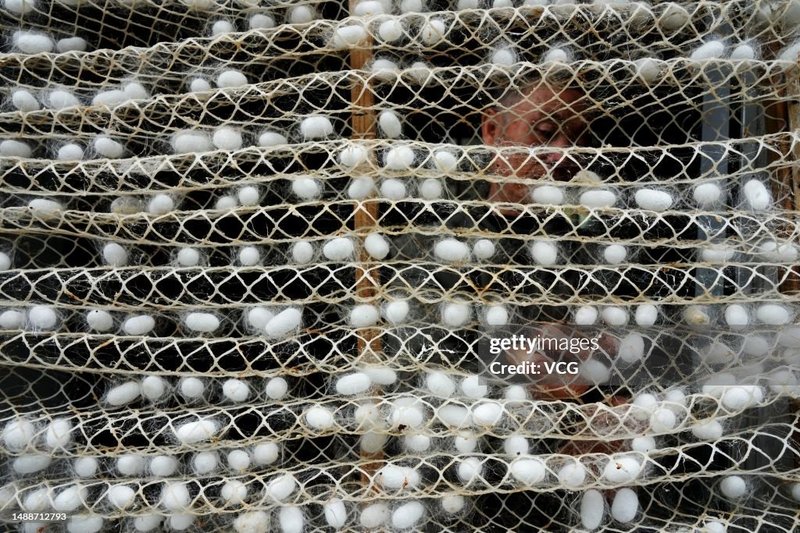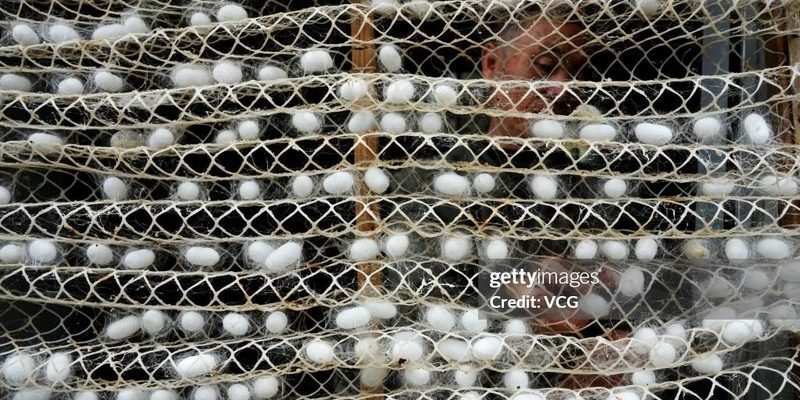
Imagine you’re in a cozy workshop, surrounded by the soft glow of daylight filtering through the window. You’re ready to dive into the fascinating process of harvesting silkworm cocoons. It’s like getting ready to bake a cake: you need the right ingredients and tools to create something beautiful. In this article, we’ll explore the best tools for harvesting and handling silkworm cocoons, ensuring you’re equipped for success in your silky quest.
Understanding the Silkworm Lifecycle
Before we jump into the tools, let’s take a moment to appreciate the silkworm’s lifecycle. Silkworms, or *Bombyx mori*, begin as eggs, which hatch into larvae that feast on mulberry leaves. After several molts, these larvae spin their cocoons, encasing themselves in a soft, silky layer. This fascinating process can take around 2-3 weeks. It’s like watching a butterfly emerge from its chrysalis, but instead, you’re left with these beautiful, silky cocoons.
Why does this even matter for harvesting? Well, knowing the lifecycle helps you determine the right time to gather these cocoons. You want to harvest them when the silk is still intact, but the pupae are mature enough. This knowledge will guide your timing, making your harvesting process smoother and more efficient.
The Essential Tools for Harvesting
To properly harvest silkworm cocoons, you’ll need some dedicated tools. Here are the essentials that will make your job easier:
- Harvesting Knife: A sharp knife with a curved blade is perfect for cutting the silk threads without damaging the cocoons. Look for one with a comfortable grip.
- Cocoon Basket: A sturdy basket is essential for collecting the cocoons. It should be breathable to prevent moisture buildup, which can spoil your harvest.
- Protective Gloves: Handling cocoons can be sticky, so having a pair of gloves will keep your hands clean and help you maintain grip.
- Measuring Scale: When selling or processing cocoons, having a digital scale helps you weigh your harvest accurately.
Each tool plays a critical role, and investing in quality items can save you frustration down the line. Trust me, nothing’s worse than struggling with cheap tools when you’re knee-deep in cocoons!
Harvesting Techniques: The What and the How
Once you’ve gathered your tools, it’s time to get harvesting. Here’s a simple step-by-step guide on how to do it:
1. **Timing is Everything:** Aim to harvest the cocoons approximately 10 days after they’ve been spun. The silk should be dry but still intact.
2. **Cut Carefully:** Using your harvesting knife, gently cut the silk threads connecting the cocoons to the frame. Be careful not to puncture them, as this can ruin the silk quality.
3. **Place in the Basket:** Collect the cocoons in your basket as you go. Keep them in a single layer to avoid crushing them.
4. **Double Check for Damage:** Before moving to the next batch, inspect each cocoon. Any that are damaged should be set aside, as they won’t yield quality silk.
Harvesting takes patience and a gentle touch; rushing can lead to a less-than-perfect yield.
Handling Silkworm Cocoons Post-Harvest
After harvesting, it’s crucial to handle the cocoons with care to ensure quality. Here’s how to do it right:
– **Storage:** Keep the harvested cocoons in a cool, dry place. A well-ventilated area is ideal to prevent mold. Avoid stacking them too high, as the weight can crush those on the bottom.
– **Cleaning:** Occasionally, you might notice debris on the cocoons. Gently brushing them off with a soft brush can help maintain their quality without damaging the silk.
– **Quality Check:** Inspect your cocoons regularly. Keep an eye out for any signs of mold or damage; these can spoil the entire batch. If needed, separate any affected cocoons to minimize risk.
Taking these steps post-harvest ensures your cocoons remain in prime condition for processing or selling!
Processing Silkworm Cocoons: The Next Step
Once you’ve harvested and handled your cocoons, the next step is processing them to extract the silk. Here’s a quick overview of what you’ll need to know:
1. **Reeling:** This process involves soaking the cocoons in hot water to soften the silk. Then, you carefully unwind the silk threads from each cocoon. A reeling machine can make this job much easier if you have a large batch.
2. **Spooling:** After reeling, the silk threads need to be wound onto spools. This helps keep them neat and ready for further processing or weaving.
3. **Dyeing and Finishing:** Many people choose to dye silk to create vibrant fabrics. Be sure to use dyes that are suitable for silk to maintain its integrity.
Processing cocoons can be an art in itself. If you plan to delve deeper into sericulture, investing in proper equipment can enhance your efficiency and output.
Best Brands for Silkworm Harvesting Tools
When it comes to choosing tools for harvesting and handling silkworm cocoons, not all brands are created equal. Here are a few trustworthy names to consider:
– **Meyer Tool Company:** Known for their high-quality harvesting knives, Meyer offers durable blades that stay sharp and withstand frequent use.
– **Tuff Stuff:** Their cocoon baskets are praised for being lightweight yet sturdy, which makes collecting easier without risking breakage.
– **Pro-Guard:** A reliable choice for protective gloves, Pro-Guard offers options that are both flexible and puncture-resistant, perfect for handling sticky cocoons.
Choosing the right brand goes a long way in ensuring that your tools last and perform well during use.
Common Challenges in Silkworm Cocoon Harvesting
Like any hobby or craft, harvesting silkworm cocoons comes with its challenges. Here are some hiccups you might encounter:
– **Timing Issues:** Waiting too long or harvesting too early can affect the quality of your silk. Always keep an eye on the life cycle of your silkworms.
– **Environmental Conditions:** Humidity and temperature can impact the quality of cocoons. If you’re in a particularly humid area, consider using dehumidifiers in your storage space.
– **Quality Control:** It can be easy to overlook damaged or poor-quality cocoons amidst a large batch. Regularly inspect your harvest to prevent these from spoiling your silk.
Being aware of these potential challenges can prepare you to handle them more effectively, ensuring a smoother harvesting process.
Wrapping Up Your Silkworm Cocoons Journey
Harvesting and handling silkworm cocoons is a rewarding but intricate process. With the right tools, techniques, and a little patience, you can transform these tiny silk-producing machines into beautiful threads of silk fabric. Remember that it’s not just about the final product, but also the journey that comes with learning and growing in the world of sericulture.
So go ahead, gather your tools, and dive into the fascinating world of silk production. You’ll discover that patience and care can lead to beautiful results—just like any good recipe! Happy harvesting!

